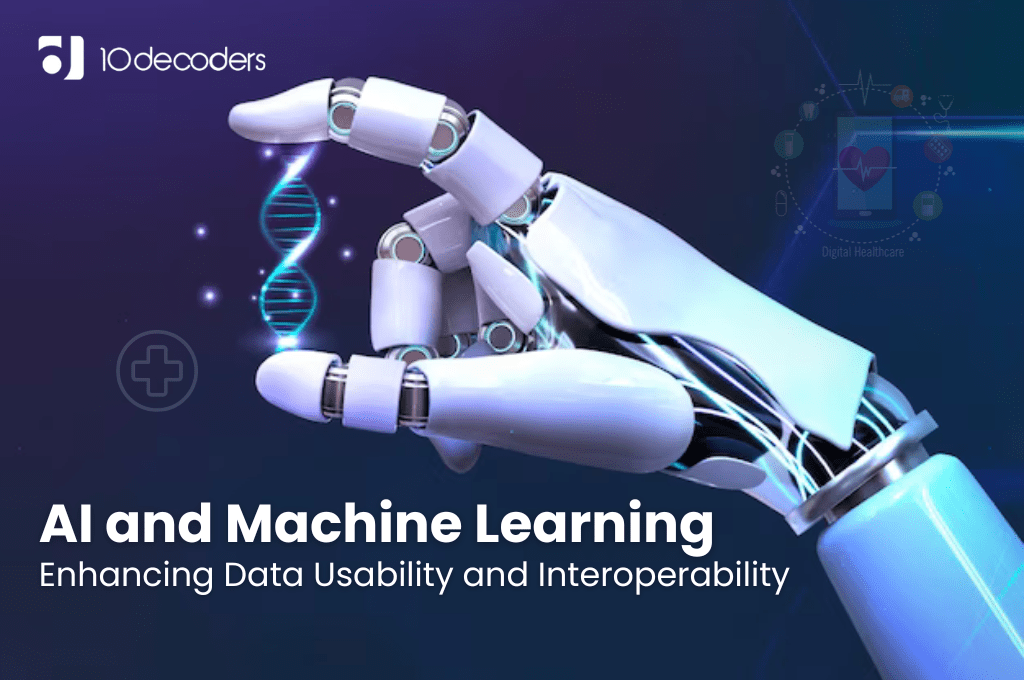AI and Machine Learning: Enhancing Data Usability and Interoperability
In the age of information overload, data alone is no longer the golden goose. Its true value lies in its usability, its ability to be understood, analysed, and transformed into actionable insights. But here’s the rub – data often sits locked away in silos, riddled with inconsistencies, and speaking a language only a select few can decipher. Enter the dynamic duo of AI and machine learning, ready to unlock the hidden potential within our data mountains.
Think of AI and machine learning as the data whisperers. They possess a unique ability to navigate the complexities of data, gleaning patterns and extracting meaning where we see only chaos. Let’s dive deeper into how these powerhouses are making data more usable and interoperable:
1. Automating Data Wrangling
Traditional approaches to data cleaning and preparation often resemble a manual, resource-intensive process of scrubbing and standardising raw data. This is akin to meticulously cleansing a vast, disorganised warehouse of information, facing challenges like inconsistencies, missing values, and incompatible formats. Artificial intelligence (AI) and machine learning (ML) offer a paradigm shift, acting as automated and intelligent agents of systematically analysing and transforming data. They leverage advanced algorithms and statistical techniques to identify patterns, impute missing values, and harmonise disparate formats, akin to a highly sophisticated data refinery that streamlines and enhances the quality of raw information.
- Automated Data Cleaning: Algorithms can identify and correct inconsistencies, missing values, and outliers, transforming messy datasets into clean, uniform landscapes ready for analysis.
- Data Standardization: No more wrestling with incompatible formats! AI can translate data from diverse sources into a common language, enabling seamless integration and analysis.
- Feature Engineering: AI can automatically generate new features from existing data, uncovering hidden relationships and unlocking deeper insights.
2. Building Bridges of Interoperability
Data silos are like isolated islands, each with its own language, customs, and resources. AI and machine learning become the architects, building bridges of interoperability that connect these islands and foster collaboration.
- Semantic Interoperability: AI can understand the meaning and context of data, not just its format, allowing seamless integration between different systems and data sources.
- Ontology Mapping: AI can create mappings between different data ontologies, ensuring consistent interpretation and eliminating confusion.
- Data Federation: Imagine accessing data from multiple sources without ever leaving your own platform! AI makes this possible by creating federated queries that span across diverse systems.
3. Extracting the Signal from the Noise
Raw data is like a babbling brook, filled with noise and irrelevant chatter. AI and machine learning are the skilled listeners, filtering out the noise and amplifying the signal, the valuable insights hidden within the data.
- Predictive Analytics: AI can analyse historical data and identify patterns to predict future trends, enabling proactive decision-making in healthcare, finance, and beyond.
- Machine Learning Models: AI can learn from data to build models that can recognize patterns, classify data, and make predictions, paving the way for personalised experiences and targeted interventions.
- Text Analytics: AI can extract insights from unstructured data like text and images, unlocking the wealth of information hidden within documents, social media posts, and even medical scans.
The Road Ahead
While the potential of AI and machine learning in enhancing data usability and interoperability is undeniable, challenges remain. Ethical considerations surrounding data privacy and bias need careful attention. Additionally, ensuring robust infrastructure and skilled personnel to implement and manage AI solutions is crucial.
The potential rewards far outweigh the challenges. As we move forward, we must continue to refine AI and machine learning, ensuring they serve as responsible and ethical conductors of our data symphony. Open-source initiatives, data governance frameworks, and continuous ethical monitoring are crucial components in this endeavour.
The future of data, then, is not a cacophony of competing voices, but a harmonious collaboration. With AI and machine learning as our guides, we can transform the data deluge into a symphony of insights, driving innovation, solving complex challenges, and ultimately, shaping a better future for all. So, let the data sing! Let the instruments of AI and machine learning orchestrate its beautiful melody, and together, let us listen to the wisdom it holds.
Nevertheless, the future is bright. As AI and machine learning continue to evolve, we can expect even greater strides in data utilisation. Imagine a world where data flows freely, where insights are readily available to everyone, and where data-driven solutions empower us to tackle the challenges of the 21st century. So, let’s embrace the data revolution, fueled by the magic of AI and machine learning, and unlock the true potential of the information age.



